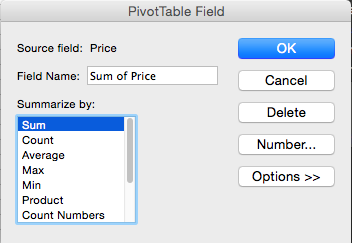An easy way to fetch up-to-date market data about Doge coin and (almost) any other crypto coin in Excel.
There are many methods to get web data and specifically crypto market data into Excel. I find this one to be simple, reliable, and free.
Pros for this method:
- Data is from the great source of CoinMarketCap.com
- This method is easy to use for non-developers
- This method works on MacOS and Windows
Cons for this method:
- Does not work on mobile and web
- Requires access to a local .iqy file stored on your machine
- Requires dedicated helper-tab for each coin you need to fetch
The Basics:
To fetch the data we will use Microsoft’s “Web Query”, this requires writing a file with .iqy file extension on your local machine.
It would seem that Microsoft is not pushing this feature and maybe even considering deprecating it for one of the alternatives, but for now this works perfectly.
Documentation is a bit limited by you can read about it from non official sources, such as –
- Excellent post by Justin James from 2006.
Getting Start – Write an iqy file:
Using your preferred text editor, write down the following content to a local file, and call it “Crypto Assets.iqy”.
- The file name and location are not important as long as you remember them
The content for “Crypto Assets.iqy”:
WEB
1
https://coinmarketcap.com/currencies/["Crypto Asset"]/
Selection=AllTables
Formatting=None
PreFormattedTextToColumns=True
ConsecutiveDelimitersAsOne=True
SingleBlockTextImport=False
DisableDateRecognition=False
DisableRedirections=False
Setup web query in Excel:
- Open you Excel worksheet, add new Sheet, and call it “DogeCoin”.
- Navigate in the top menu options to find –
Data → Get External Data → Run Web Query…

- A prompt will open to ask you for for location of the iqy file. Find you “Crypto Assets.iqy” file and open it.
- A second prompt will ask you for location to dump the output. Accept the defaults.
- A third prompt will ask you for the name of the asset you need.
- In this example, we want the current price of DogeCoin so please type “dogecoin”
- Make sure to type it correctly
- Also, make sure to check the check-box for “Use this value/reference for future refreshes”
- Finally, click “Ok”

- Excel will fetch the data. If all is well you should see the following:

- Every time you need updated number just hit navigate to the Data menu and hit Refresh All.

- The same can be done for other crypto assets covered by CoinMarketCap. Just make sure to spell the asset name in full and correctly. Try out “bitcoin”, “ethereum”, “shiba-inu”, or any other asset.
- This basic concept can be automated, and enhanced in VBA, but that is beyond the scope of this post.
Thanks for reading and I hope this is useful.
































